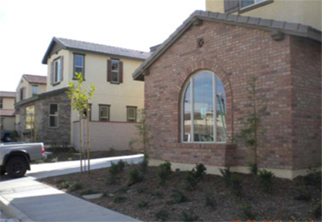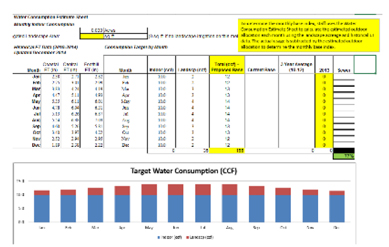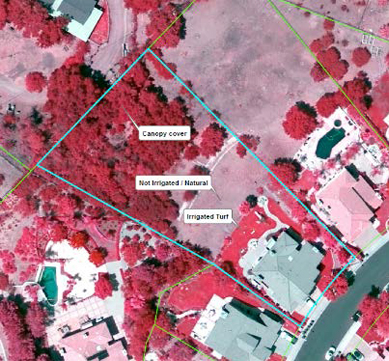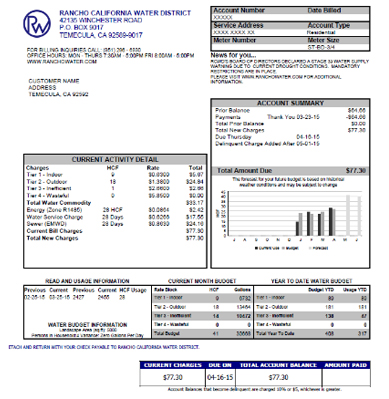Setting a Water Budget
There are several different approaches, methods, and technologies that can be used to establish water budgets, which are the specific amount of water allotted to each customer. Each agency uses slightly different equations to calculate these water budgets and commonly allocations are separated into indoor water use and outdoor use. Equations may also differ depending on the source of water; for instance, recycled water versus potable water. Beyond that, the different customer classes (e.g., residential, dedicated irrigation, commercial, industrial, and institutional or public) often utilize different calculations.
Each water budget equation needs specific data on each customer in order to develop a water allocation unique to that customer’s water needs. This data may be measured for each customer or estimated using a variety of sources and analysis techniques, depending on the data in question. The indoor water budget generally relies on information on the number of people per household and the amount of water each person uses each day. The outdoor water budget focuses on determining the landscaped or irrigated area, the evapotranspiration rate, and the monthly conservation factor (or crop coefficient) often based on state guidelines for outdoor landscaping. However, these data needs may change based on the customer type and source of water.
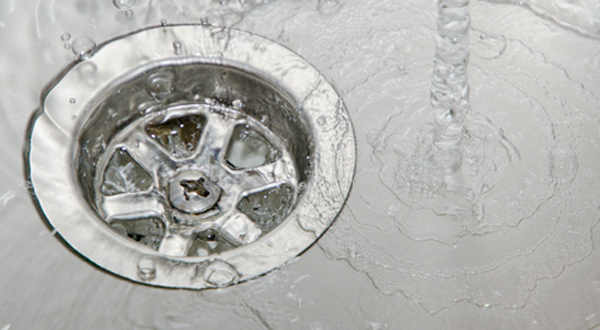
Changes to data once a water budget is established is discussed further in Variances and Long-Term Maintenance »
In many cases, customers are contacted first to confirm data even before BBRs are implemented. Case studies where this occurred may be found below as well as in Customer Outreach, Support, and Service » .
The following pages, by agency, describe the basis for establishing water budgets under a number of different conditions, the technologies used to acquire and process necessary data, and different methods to apply water budgets based on an agency’s specific needs.
Evapotranspiration (ET), as mentioned above, is a typical component of the outdoor water budget equation, but there are different ways to determine the ET value to use for an individual customer. Typically, reference ET (ETo) is determined from meteorological data or pan evaporation and is based on a standardized vegetation. Crop-specific ET can then be calculated based on the unique crops observed in the region. Agencies have a variety of different ways to determine the evapotranspiration, as discussed in Evapotranspiration Data Sources »
Water agencies have been severely impacted by the ongoing drought that began in 2012. Some agencies have restricted water use and encouraged greater conservation via water budgets, as discussed in Relation to Drought Response/Water Shortage » These techniques, though specific to the current drought, also apply during any water shortage situation.

